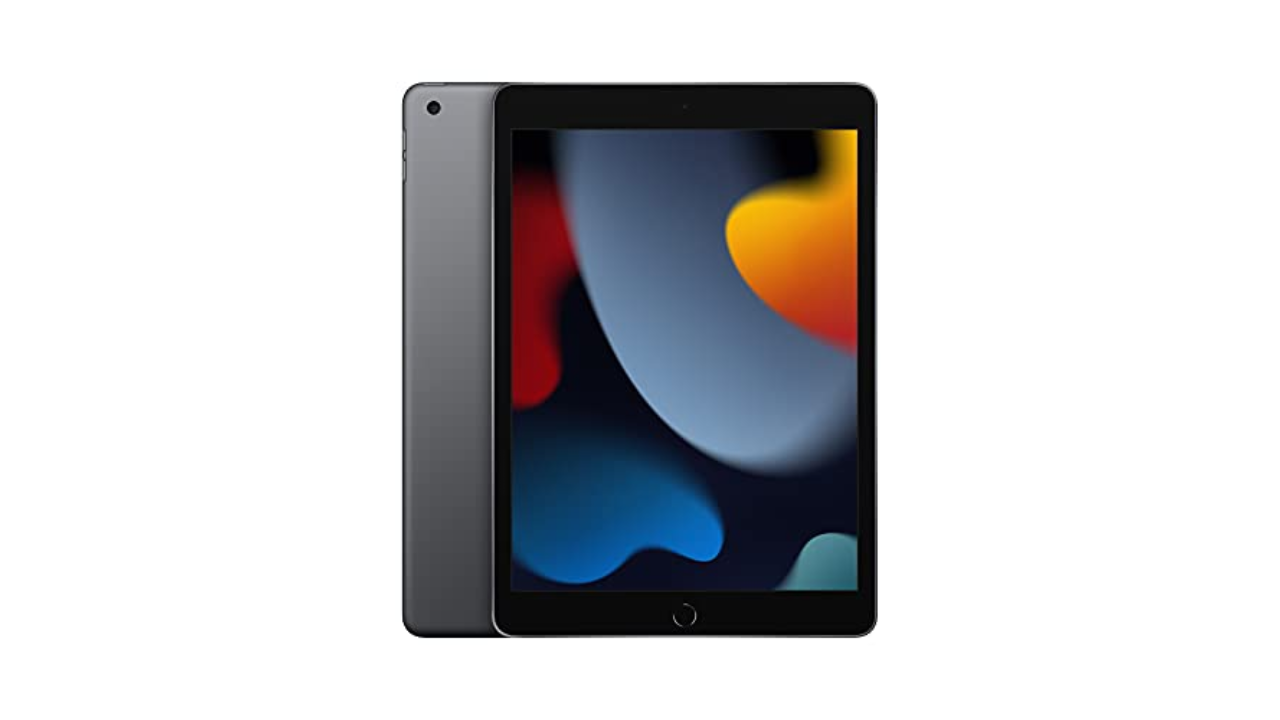If you make your living working on video content, it’s worth investing in a laptop that makes the job as easy as possible. The best video editing laptop can save you valuable time, it can make your life easier, and it can make your work better.
Folks who are buying laptops for everyday home and work use often look for factors like long battery life, light weight, and a portable build. But those factors are often less important for editors. Verge video professionals Owen Grove and Jasmine Lewis both feel that processing power — specifically, the power to handle resource-intensive programs on a daily basis — should be the most important consideration for the best video editing laptop. “People who are editing professionally should spend as much they can afford to on the highest processing power,” Owen says. “Performance will most often be the thing that saves you.” Owen also looks for an SD card slot, which he says is “pretty much a necessity on any laptop for me.”
Jasmine prefers to edit on a large, high-resolution display, which is both more accurate and easier on the eyes when working with tons of little windows and toggles. “Fast renders, big screen, nice colors, I think are my focus,” Jasmine says.
Should you buy a gaming laptop for video editing since they often come with powerful components and large screens? You can, but the best video editing laptops will generally be dedicated to that task. Part of that is noise. The most powerful gaming laptops on the market are quite loud when maxed out, which can be distracting in an office setting. “I’m used to stuff like Dell, Alienware, and MSI laptops whose fans are so loud that it’s actually bad for some editing scenarios,” says Owen, who recently converted from gaming PCs to an M1 Mac. Gaming laptops also tend to come with displays tailored to gaming — high refresh rates, lower resolutions, matte finishes, and lower contrast — that aren’t optimized for video work.
That doesn’t mean you can’t find a dedicated gaming laptop that can work for video editing (and I have included a couple on here, in case that’s what you’re looking for), but if you plan on doing a lot more video editing than you do gaming, your money is likely better spent elsewhere.
With all of this in mind, the following are our picks for the best video editing laptops of 2023.
1. Apple MacBook Pro 16 (2023)
The best video editing laptop
$2499
The 16-inch MacBook Pro for 2023 remains the largest at the top end of the Mac laptop lineup. Its base model comes with the new M2 Pro 12-core CPU and 19-core GPU, 16GB of RAM, and 512GB SSD storage. It can also be configured with a higher-end M2 Max processor. Read our review.
CPU: M2 Pro, M2 Max / GPU: M2 Pro, M2 Max / RAM: 16GB, 32GB, 64GB, 96GB / Storage: 512GB, 1TB, 2TB, 4TB, 8TB / Display: 16.2-inch Liquid Retina XDR, 3456 x 2234, adaptive refresh up to 120Hz / Dimensions: 14.01 x 9.77 x 0.66 inches / Weight: 4.7 pounds (M2 Pro), 4.8 pounds (M2 Max)
Though it’s far from cheap, the 16-inch MacBook Pro with M2 Pro or M2 Max is the best video editing laptop you can buy. It checks all of the boxes that our video editors mentioned: a generous port selection with an SD slot, a large and gorgeous screen, and (relatively) quiet fans. If you can get your hands on one of these, you’ll want for very little.
We currently recommend the (oft-discounted) M1 Pro and M1 Max models for general use, but professional video editors who need every ounce of speed and performance they can get will see a tangible difference in things like render and export time with the newer chips. Not only is the 2023 MacBook Pro a top performer, but it’s also incredibly efficient, with some of the best battery life in today’s laptop market. That means that if you need to edit while you’re out and about, you’ll get a lot more time to a charge than you will out of most other video editing laptops. Our editors can usually go a day or two without charging these devices.
The MacBook Pro is also just as powerful on battery as when it’s plugged into the wall — there are no compromises to be made when editing on the go, unlike virtually every Windows laptop option, which is slower when used on battery.
Should you choose the M2 Pro or the more powerful but $200-ish more expensive M2 Max? You will see faster performance from the M2 Max, but the difference is mostly apparent in workloads that heavily tax the GPU. While every professional’s needs will be different, Verge senior video producer Becca Farsace’s advice is that folks regularly doing demanding graphics tasks — work involving 3D, animation, 8K content, or longform 4K content — will get their money’s worth out of the M2 Max. Others should be fine with the M2 Pro. You’ll likely eke a few extra hours of battery from that chip as well.
Read our full review of the Apple MacBook Pro 16 (2023).
2. Razer Blade 18
Our favorite gaming laptop for video editing
$3800
The Razer Blade 18 is a powerful gaming laptop with a compact and attractive design.
CPU: Intel Core i9-13980HX, Core i9-13950HX / GPU: Nvidia Geforce RTX 4060, RTX 4070, RTX 4080, RTX 4090 / RAM: 16GB, 32GB, 64GB / Storage: 1TB, 2TB / Display: 18-inch, 2560 x 1600, 240Hz / Dimensions: 15.74 x 10.84 x 0.86 inches / Weight: 6.8 pounds
I said above that I don’t generally advise buying a gaming laptop for video editing. But if you really want to do that (perhaps because you plan to do a lot of gaming as well as editing), I recommend that you go for the Razer Blade 18.
Unlike many of the top gaming laptops, the Blade 18 has an unobtrusive enough design that it shouldn’t be a huge distraction to co-workers in your office and is portable enough that bringing it to meetings, demonstrations, and such won’t be a giant pain. It has an SD slot, which is harder to find on gaming laptops than it is on dedicated workstations.
And most importantly, it has one of the best screens you can get on a gaming laptop. The gigantic 18-inch size is a boon for frequent users of programs with lots of windows and tiny text — Premiere, DaVinci, After Effects, and the like. All Blade 18 models come with a QHD Plus, 240Hz panel that is likely as sharp and bright as you’ll find in the gaming space.
Read our full review of the Razer Blade 18.
3. Asus Vivobook Pro 14 OLED
The best cheap video editing laptop
$575
The Asus Vivobook Pro 14 OLED is one of the most affordable ways to get an OLED screen with a 90Hz refresh rate.
CPU: AMD Ryzen 7 6800H, Intel Core i7-12700H / GPU: Intel Iris Xe, Nvidia GeForce RTX 3050 / RAM: 16GB / Storage: 512GB, 1TB / Display: 14-inch OLED, 2880 x 1620, 90Hz / Dimensions: 12.5 x 8.8 x 0.74 inches / Weight: 3.31 pounds
If you’re looking for a competent, portable video editing device but products like the MacBook Pro and the ConceptD are out of your budget, you might be the ideal customer for one of Asus’ Vivobook Pro models (like this OLED one). This device has one of the best screens you can get on a 14-inch laptop, incorporating OLED technology, 2880 x 1800 resolution and a 90Hz refresh rate. It also has a creator-tailored port selection much better than you’ll find on many ultraportable laptops (such as the — let’s be honest — connectivity-starved MacBook Air), including a microSD reader, an HDMI 2.1 and multiple USB-A for external drives, 4K displays, and other peripherals.
Oh, there’s also an LED numpad in the touchpad. Numpads aren’t useful for everyone, but they are something it’s very uncommon to see in any 14-inch device.
But the most attractive thing about this device is the price. You can often find models on sale for below $1,300, especially older models — making this an excellent pick for amateur editors or more seasoned folks seeking a portable secondary driver.
Read our full review of the Asus Vivobook Pro 14 OLED.
4. HP Zbook Studio G8
The best Windows laptop for video editing
The Zbook Studio G8 is a high-end workstation for professionals who want the best of the best. In addition to high-end chips for fast speeds, it includes a robust suite of privacy and security features tailored to an enterprise customer.
CPU: Intel Core i7-12700H, 12800H; Intel Core i9-12900H / GPU: Nvidia GeForce RTX 3070 Ti, RTX A1000, RTX A2000 / RAM: 16GB, 32GB / Storage: 512GB, 1TB / Display: 15.6-inch, 2560 x 1600 / Dimensions: 13.94 x 9.24 x 0.7 inches / Weight: 3.81 pounds
The Zbook line isn’t playing around. The Studio G8 is a high-performing device with both an RGB keyboard and business-oriented privacy and security features, including TPM 2.0, bitlocker encryption, and HP Power On Authentication. If you know what those things are, this might be a good choice for you. And while this was a prohibitively expensive device when it first hit shelves, its prices have reached a point where it’s a reasonable product to recommend to a wide swath of professional video editors who need corporate security features for whatever reason (provided you’re okay with buying a product line that isn’t brand-new).
In addition to the flashy colors, the Zbook Studio has a generous port selection, an OLED screen option, excellent speakers, and even Tile functionality in case you lose the device. It’s got HP’s Omen gaming hub pre-installed for those hoping to quickly swap from work to play. We even got about five hours of battery life out of our test unit, which isn’t too terrible as this category goes. Those seeking a bold, colorful device for their editing work should look no further than the Zbook Studio G8.
Read our full review of the HP Zbook Studio G8.
5. MSI Creator Z16
A razor-thin video editing laptop
The Creator Z16 is a portable workstation for content creators and professionals. It packs powerful chips into an impressively thin-and-light chassis.
CPU: Intel Core i7-12700H / GPU: Nvidia GeForce RTX 3060 / RAM: 16GB / Storage: 1TB / Display: 16-inch, 2560 x 1600, 120Hz / Dimensions: 14.13 x 10.08 x 0.64 inches / Weight: 5.07 pounds
At just over a half-inch thick, the Creator Z16 puts portability first. It’s got a subdued (dare I say… MacBook-esque?) design, and it weighs well under five pounds. It won’t be too much of a pain to carry around (at least, not compared to many other workstations), and you can use it in meetings without too many stares.
Equipped with a 120Hz QHD screen, excellent speakers, and top-end chips from Nvidia and Intel inside, the Creator Z16 was as fast as almost any Windows laptop we tested last year in Premiere Pro exports. Just be prepared for a bit of fan noise — they were working quite hard during our testing.
Read our full review of the MSI Creator Z16.
Credit: Source link


:format(webp)/cdn.vox-cdn.com/uploads/chorus_asset/file/24371426/236492_MacBook_Pro_16__2023__AKrales_0009.jpg)









